Photographing Landscapes That Don’t Have Mountains – As a landscape photographer, I’ve often found myself drawn to vast, open spaces without mountains. These non-mountainous landscapes offer unique opportunities to capture the natural world’s beauty and serenity. In this guide, I’ll share my insights and practical tips for photographing these landscapes.
Landscape photography is more than just grand peaks. It’s about embracing the diverse beauty of our planet. From rolling hills to serene lakes, the world is full of breathtaking landscapes. By learning to approach these settings with the right techniques, you can create stunning images that captivate and inspire.
Table of Contents
Understanding Non-Mountainous Landscape Photography
Mountain landscapes often grab photographers’ attention. But, there’s a special beauty in open field landscape photography, prairie landscape photography, and desert landscape photography. These flat areas need a different way to add depth and interest without mountains.
Defining Flat Terrain Photography
Flat terrain photography is about landscapes without big height changes. This includes prairies, deserts, beaches, rural scenes, and even cityscapes. It’s a challenge and an opportunity for photographers.
Unique Challenges and Opportunities
The main challenge is making the scene look deep and interesting without mountains. Photographers use lines, textures, and small changes in the land to guide the viewer’s eye.
But, these flat areas also have special chances. They can show off amazing skies, details in the foreground, and light and shadow. Photographers can find beauty in these simple spaces, capturing the environment in a unique way.
Types of Non-Mountainous Landscapes
- Open Fields: Huge, open grassy or farmland areas that feel peaceful and show off scale.
- Prairies: Wide, gentle grasslands that highlight the horizon, wildlife, and changing skies.
- Deserts: Dry, simple places that show off light, shadow, and unique rocks.
- Beaches: Coastal areas with moving water, land, and sky.
- Rural Scenes: Countryside with farms, barns, and buildings that fit into nature.
- Urban Landscapes: City views, parks, and industrial spots that show a different side of non-mountainous areas.
Photographing Landscapes That Don’t Have Mountains: Each type of non-mountainous landscape needs special skills and a sharp eye to capture its beauty. By tackling these challenges, you can grow as a photographer and share powerful stories through your photos.
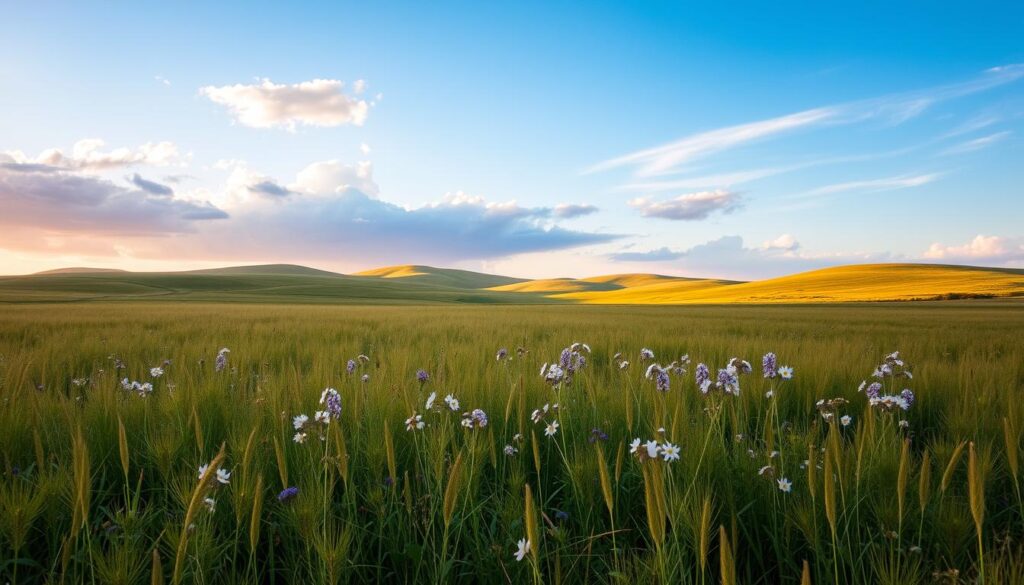
Essential Equipment for Flat Terrain Photography
Capturing the beauty of flat landscapes requires the right photography equipment. From wide-angle lenses to sturdy tripods, the right gear can greatly improve your photos.
A wide-angle lens is key for flat terrains. Lenses wider than 24mm are perfect for showing off the vastness of these landscapes. The Canon EF 11-24mm Ultra-Wide Angle Lens is a top choice for professionals. It captures wide vistas with little distortion.
- The Canon EF 24-105mm lens is also great. It lets you take both wide-angle and mid-range shots.
- The Canon EF 100-400mm Zoom Lens is perfect for distant subjects or wildlife.
A sturdy tripod is also crucial for flat terrain photography. The Peak Design Travel Tripod is loved for its compact size and durability. It’s great for DSLR cameras and helps you get sharp shots, even in windy conditions.
Other must-haves include a remote shutter release and a lens cleaning kit. A comfortable camera bag like the Peak Design Everyday Camera Backpack is also essential. It keeps your gear safe during long walks.
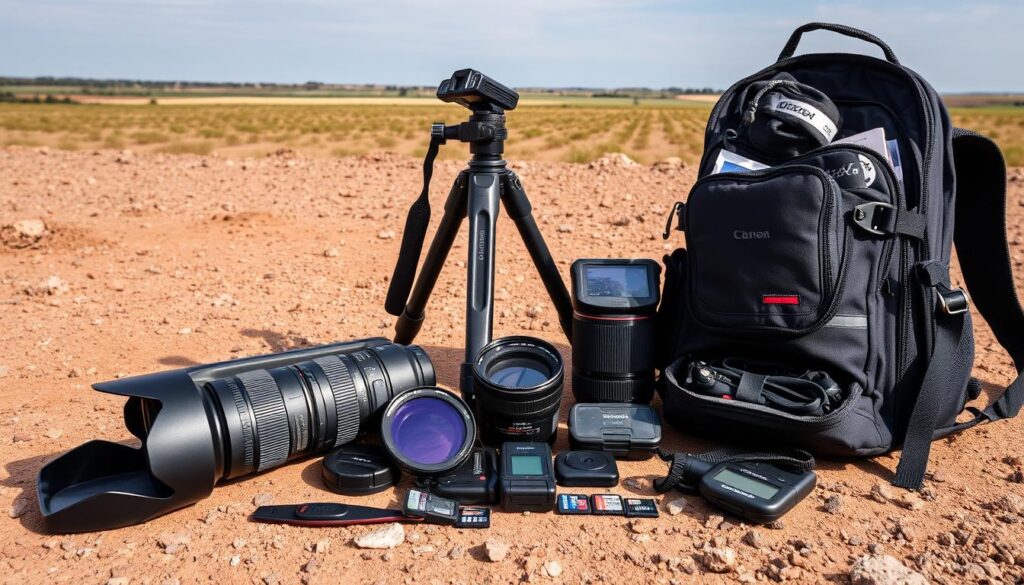
Investing in the right landscape photography equipment lets you capture the beauty of flat terrains. Your photos will show off the unique landscapes beyond the mountains.
Camera Settings for Photographing Landscapes That Don’t Have Mountains
Capturing stunning landscapes without mountains needs careful camera settings. To show the beauty of flat terrains, follow these key tips for landscape photography.
Optimal Aperture Settings
For flat landscapes, use apertures from f/8 to f/16. These settings ensure everything from the front to the back is sharp. But, remember, very small apertures can cause image softness.
ISO and Shutter Speed Considerations
Always use the lowest ISO setting to keep your photos clear and noise-free. The shutter speed depends on what you want to capture. Faster speeds freeze movement, while slower speeds blur it, adding motion to your shots.
Focus Techniques for Vast Spaces
Getting everything sharp in wide open spaces is tough. Use a single focus point and aim for one-third into the scene. Some cameras have focus peaking to help you get your focus spot on.
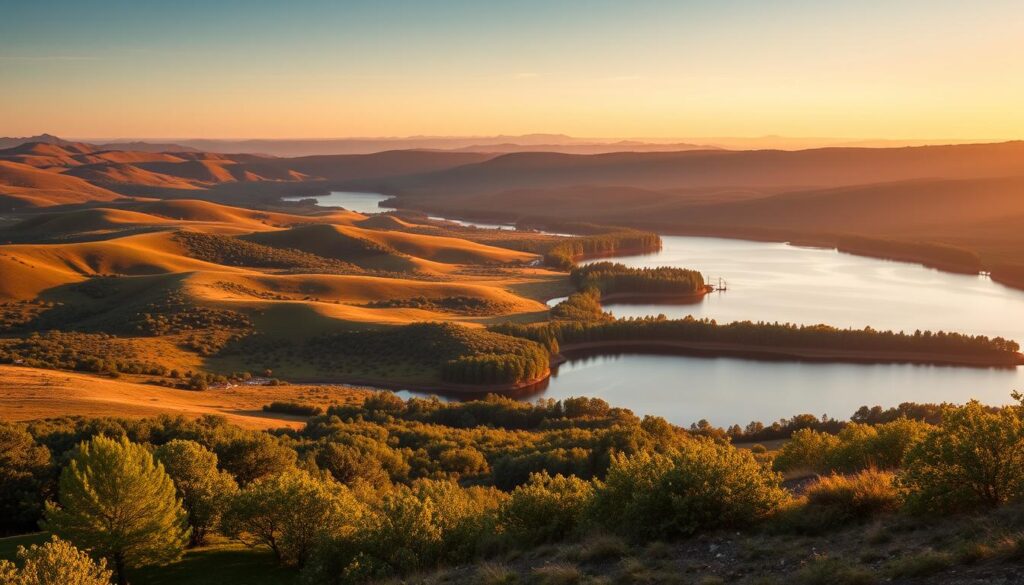
“Mastering the art of landscape photography in flat terrains requires a keen eye for detail and a deep understanding of how to optimize your camera settings.” – [Your Name], Award-Winning Landscape Photographer
Mastering Light in Open Landscapes
Capturing open landscapes needs a deep grasp of light. The “golden hour” is perfect for photography, with its soft, warm light. It turns simple scenes into stunning images.
The “blue hour” happens after sunset or before sunrise. It brings a cool, ethereal feel. Knowing how to use golden and blue hour light is crucial for amazing golden hour photography and blue hour landscape photography.
Midday light is different, with its harsh tones. But, it can also add depth and drama to your photos. Try backlighting and silhouettes to enhance this light.
Weather affects your photos too. Mist, fog, and rain add mystery. Use graduated filters to balance light and dark, making your photos pop.
“Landscape photography is the supreme test of the photographer – and often the supreme disappointment.” – Ansel Adams
Mastering light in open landscapes can take your photos to the next level. Whether it’s the golden hour, blue hour, or midday light, stay open to trying new things. With practice, you’ll create breathtaking images that show the beauty of nature.
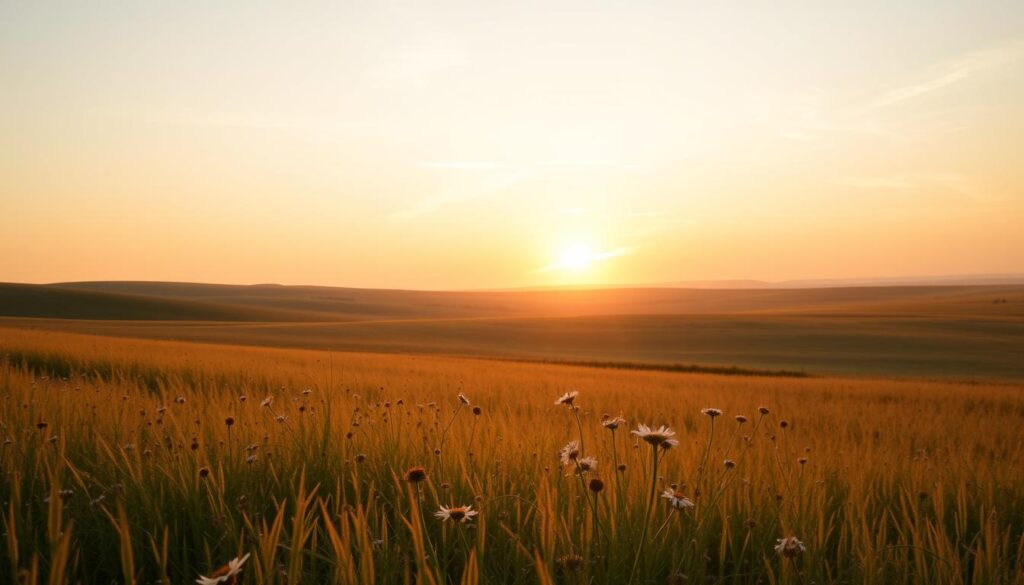
Composition Techniques for Flat Terrains
Photographing flat landscapes can be tough, but with the right techniques, you can make them pop. You can add depth, guide the viewer’s eye, and improve your flat terrain photos. Let’s dive into some key compositional methods to master open space photography.
Leading Lines in Open Spaces
Leading lines are a powerful tool in your toolkit. In flat areas, roads, fences, shorelines, or sand patterns can guide the viewer’s eye. Try placing these elements diagonally or using the rule of thirds to add depth and movement to your shots.
Creating Depth Without Elevation
Flat terrains lack the natural depth of mountains, so you need to be creative. Use foreground elements like flowers, rocks, or textures to add scale and depth. Place middle-ground subjects like trees or structures to layer your composition. And don’t forget a distant horizon or skyline to complete the illusion of depth.
Using Foreground Elements
Foreground elements are key to adding interest and depth to flat landscapes. Look for patterns, textures, or shapes nearby, like grasses, leaves, or rocks. Place these elements in the lower third of the frame to draw the viewer’s eye in, creating depth and dimension.
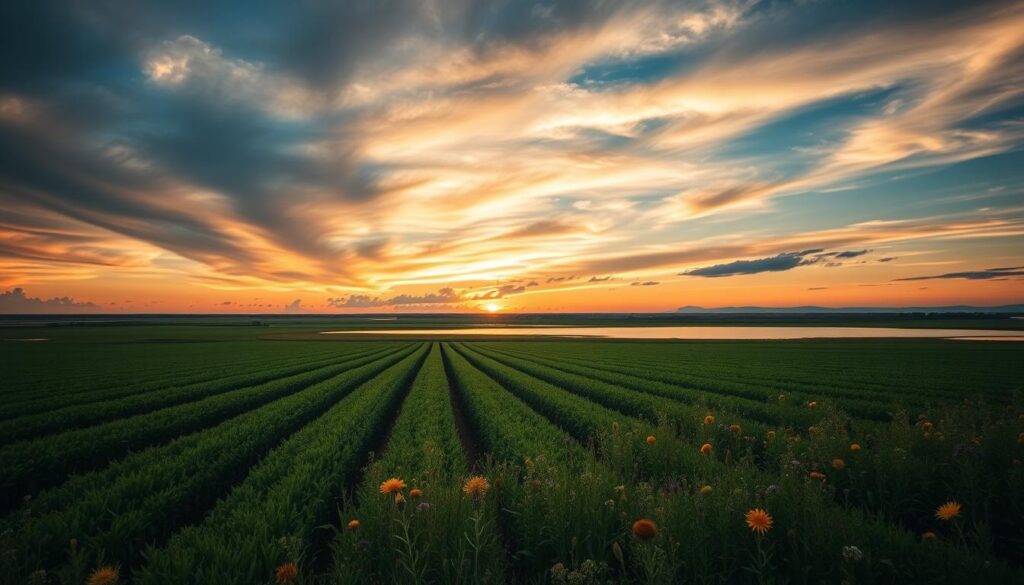
Success in flat terrain photography comes from creative composition. By using leading lines, creating depth, and adding interesting foreground elements, you can turn flat landscapes into stunning images.
Working with Weather Conditions
Weather can be both a blessing and a challenge for landscape photographers. Unpredictable weather can disrupt plans but also offer unique opportunities. By embracing the changing elements, you can take your photography to new heights.
Fog is a captivating weather phenomenon. It adds mystery and depth to landscapes, softening details. The best time for fog photography is early morning and late afternoon when the sun is low. Use a wide aperture (f/4 to f/5.6) for a dreamy look. A shutter speed of 1/60 to 1/125 captures fog’s delicate movement.
Stormy weather can inspire landscape photographers. Dramatic clouds, lightning, and rain can transform scenes. When capturing storms, prioritize safety and be prepared with the right gear, such as a sturdy tripod and weatherproof equipment. Use slow shutter speeds to highlight cloud and rain movement. A small aperture ensures a wide depth of field.
- Fog can create an ethereal, mysterious atmosphere in your landscape images.
- Shoot during early morning or late afternoon for the best lighting conditions.
- Use a wide aperture (f/4 to f/5.6) and slow shutter speed (1/60 to 1/125) to capture the movement of the fog.
- Stormy weather can add drama and mood to your landscapes.
- Prioritize safety and use weatherproof gear when shooting in inclement conditions.
- Experiment with slower shutter speeds to accentuate the movement of clouds and rain.
Embracing changing weather conditions opens up creative possibilities in landscape photography. Stay flexible, adaptable, and open to the unexpected. You’ll be rewarded with stunning, unique images that capture the essence of nature.
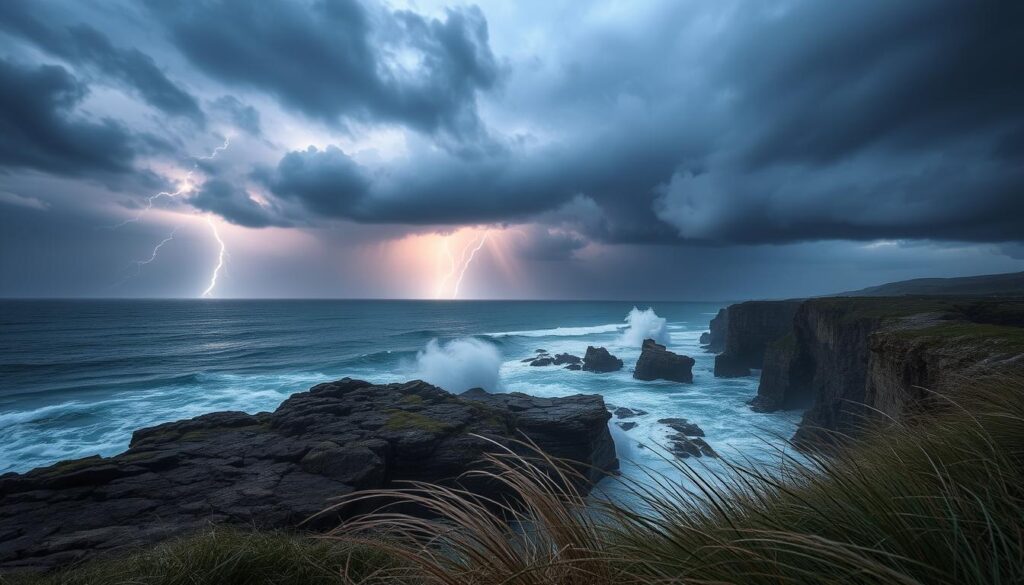
Capturing Vast Horizons and Open Fields
Mastering panoramic landscape photography is key to capturing vast horizons and open fields. These expansive scenes can be challenging, but with the right techniques, you can create stunning images. These images will show the grandeur of the scene.
Panoramic Photography Tips
To capture panoramic shots, start with a tripod for steady and level horizons. Take multiple images to stitch together, overlapping each by about 30%. This “panoramic stitching” method creates a wide, sweeping view of the landscape.
Managing Scale in Open Spaces
Showing the true scale of an open landscape can be hard. To give a sense of scale, include familiar objects like people, animals, or structures in your shot. These elements help the viewer understand the vastness of the scene. Try different aspect ratios, like 16:9 or 2:1, to highlight the panoramic landscape photography.
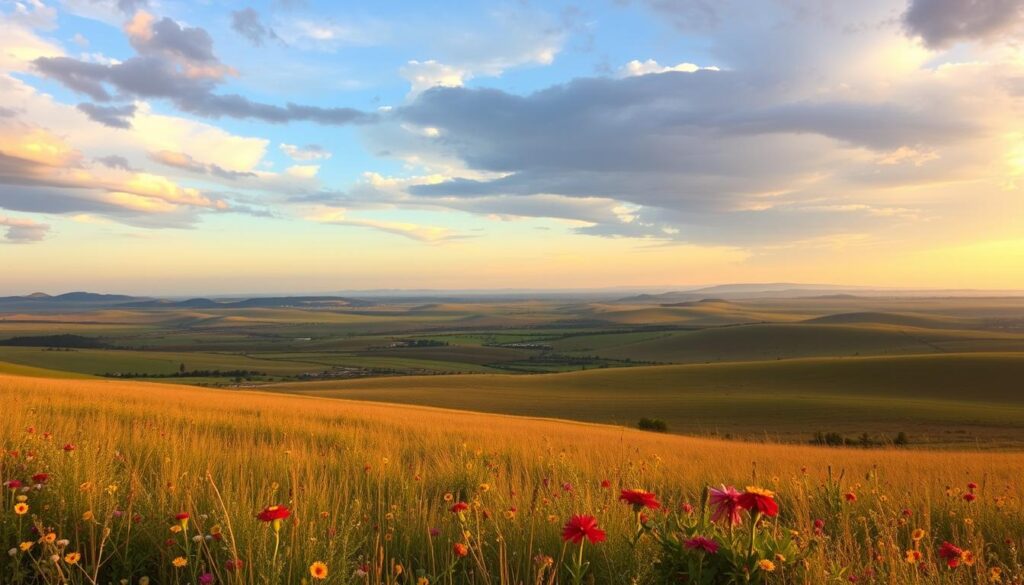
“The true magic of panoramic photography lies in its ability to capture the vast horizons and open fields that often defy traditional framing.”
By mastering panoramic photography and managing scale, you can make images that take the viewer into the heart of these capturing vast horizons landscapes. These images let the viewer fully immerse themselves in the scene.
Using Filters for Enhanced Landscape Images
Getting great shots of flat landscapes often means using filters. These tools can change how light looks, cut down on glare, and control how bright or dark your photos are. Knowing how to use different filters can really help you get creative.
Polarizing Filters are key for landscape photos. They cut down on reflections and make colors pop, especially in water, skies, and leaves. They’re great for making the sky and clouds stand out, or for getting rid of haze on water.
- Polarizing filters make the sky bluer and greens more vibrant.
- They also reduce unwanted reflections on shiny surfaces, making your photos clearer and more alive.
Neutral Density (ND) Filters are also crucial. They let less light into your camera, so you can take photos for longer. This can make water look silky smooth or clouds look blurred, adding movement and drama to your shots.
- ND filters are perfect for bright days when you want to slow down your shutter speed.
- Try out different ND strengths to find the right mix of shutter speed and depth of field.
Graduated ND Filters are also super useful. They’re darker on one side and clear on the other. They help balance the light between bright skies and darker ground, so both are well-exposed in your photo.
Using these filters can really improve your landscape photos. Try out different filters and techniques to find the best look for your flat landscapes.
Post-Processing Techniques for Flat Landscapes
Unlocking the full potential of your flat landscape images requires thoughtful post-processing. From color grading to managing dynamic range, the right editing techniques can transform your photographs. They can elevate them to new heights.
Color Grading for Different Terrains
Each landscape terrain has its own unique color palette. By adjusting the white balance and applying selective color adjustments, you can create stunning images. Warm, earthy tones are great for desert scenes, while cool, muted hues complement coastal environments.
Experiment with these color grading techniques to find the perfect look for your flat landscape photographs.
Managing Dynamic Range
Flat landscapes often present a challenge when it comes to managing the dynamic range of your images. Use exposure blending or high dynamic range (HDR) techniques to preserve detail in both highlights and shadows. This will give your photographs a balanced, natural appearance.
It prevents unsightly blown-out or underexposed areas.
FAQ
What is the key difference between photographing mountainous and non-mountainous landscapes?
The main difference is in the challenges and techniques needed. Non-mountainous landscapes, like prairies and deserts, don’t have the elevation changes mountains do. This means different ways to create depth and interest in the scene.
What types of non-mountainous landscapes can be photographed?
You can photograph prairies, deserts, beaches, rural scenes, and urban landscapes. Each type has its own features and challenges that require specific techniques.
What essential equipment is needed for flat terrain photography?
You’ll need a camera with manual controls and wide-angle lenses (24mm or wider) for vast scenes. A sturdy tripod and filters like polarizers and neutral density filters are also key. Don’t forget weather-appropriate clothing and extra gear like a remote shutter release and lens cleaning kit.
How should camera settings be adjusted for flat terrain photography?
Use smaller apertures (f/8 to f/16) for maximum depth of field. Choose the lowest native ISO for the best image quality. Shutter speeds depend on the effect you want (e.g., slower for motion blur). Focus about one-third into the scene for sharpness throughout.
How can light be used to enhance flat landscape photography?
The “golden hour” after sunrise or before sunset offers warm, soft light. The “blue hour” after sunset or before sunrise gives cooler tones. Harsh midday light can create dramatic shadows in deserts. Weather like mist or fog can also add mood to your images.
What composition techniques are effective for flat terrain photography?
Use leading lines like roads or shorelines to guide the viewer’s eye. Create depth with foreground elements, middle-ground subjects, and distant horizons. Apply the rule of thirds for balanced compositions and try different perspectives, like low angles or aerial views.
How can photographers capture the vastness of flat landscapes?
Panoramic photography is great for showing the vastness of flat landscapes. Use a tripod and level your camera for consistent horizons. Include familiar objects for size reference, like people or animals, to show the scale of the vast spaces.
What filters can enhance flat landscape photography?
Polarizing filters reduce glare and increase color saturation, especially for water and sky. Neutral Density (ND) filters allow for longer exposures, creating motion blur. Graduated ND filters help balance exposure between bright skies and darker foregrounds.
How can post-processing techniques improve flat landscape images?
Post-processing is key for enhancing flat landscape images. Adjust white balance to improve the mood. Use selective adjustments to highlight details. Manage dynamic range through exposure blending or HDR. Experiment with color grading and subtle vignetting to achieve the desired look.


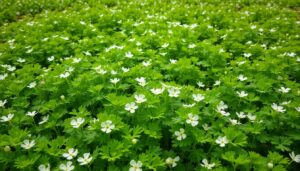

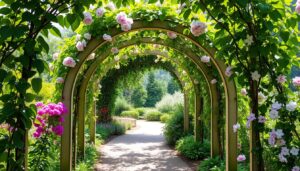

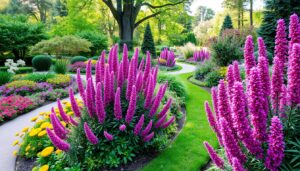
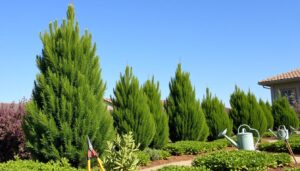
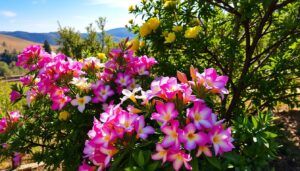
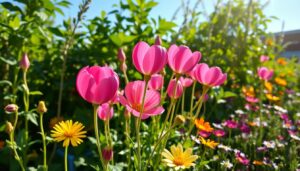
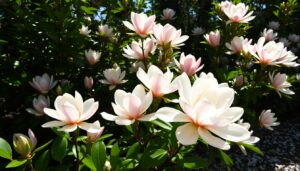
1 thought on “Photographing Landscapes That Don’t Have Mountains – Expert Tips”